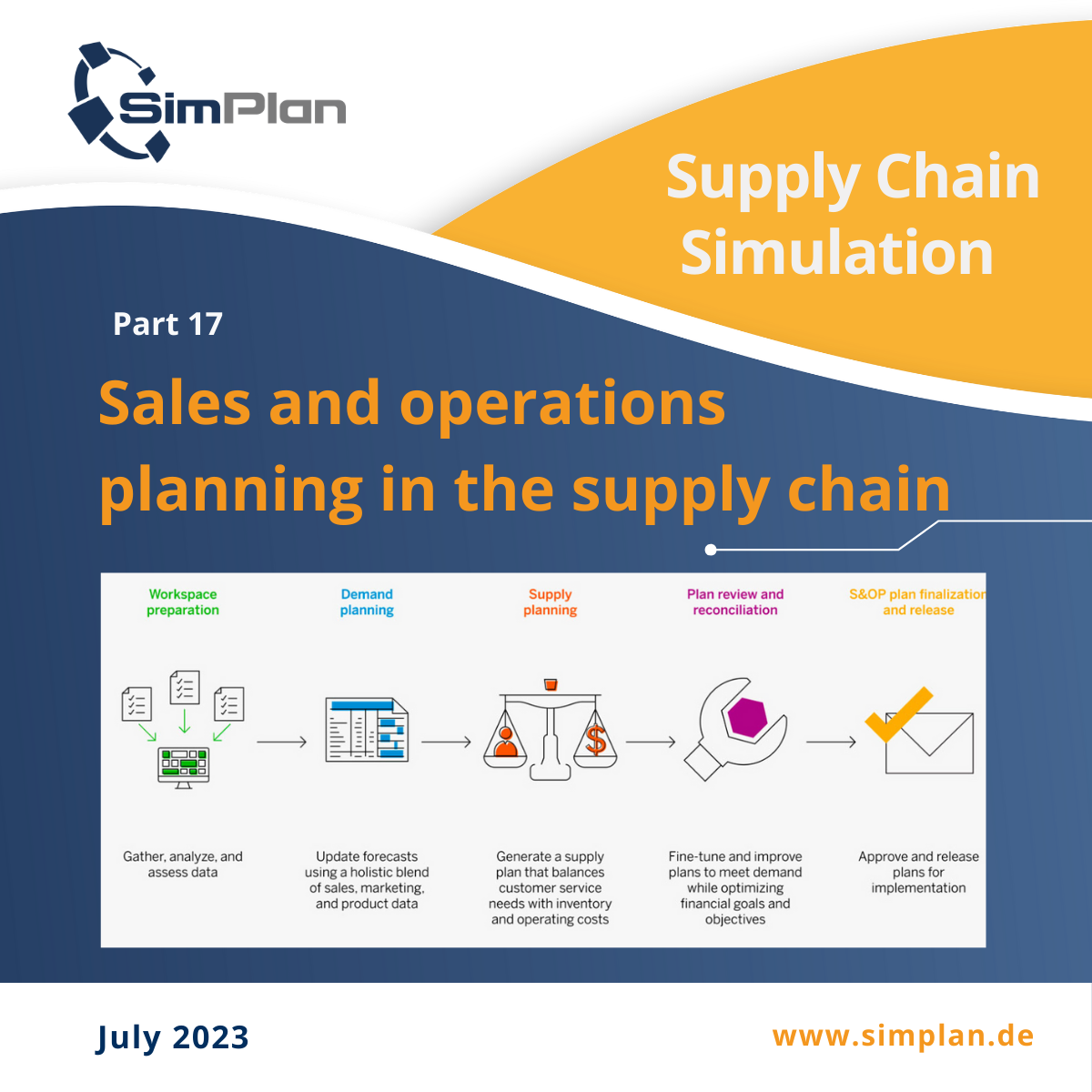Sales and Operations Planning in the Supply Chain: Is Your Company Ready?
What is sales and operations planning?
Sales and Operation Planning (S&OP) is an integrated business management process that helps align supply chain operations and business strategies with consumer demand. This medium-term tactical planning brings together all business areas – sales, marketing, new product development, manufacturing, purchasing and finance – into a single cluster.
Sales and operations planning as part of the integrated business planning process.
It is important that the different departments of a company communicate and collaborate with each other in order to provide the necessary information for procurement, production and demand planning in a timely manner and to deliver all orders on time, in full and at minimum cost.
Overall, S&OP helps the person in charge to anticipate and manage change quickly, reducing supply chain disruptions and improving customer satisfaction.
Sales and operations planning process
A typical sales and operations planning process usually proceeds through the phases of job preparation, demand planning, procurement planning, plan review and plan execution. Let’s look at the three most important ones in detail.
Demand planning
For a supply chain to be effective, it must focus on demand, i.e. on a customer or client. A demand forecast should answer the question “how many units of a certain product can be sold in a certain region at a certain price”, not “how many products can our company supply”. Therefore, such forecasts should be prepared by sales and marketing staff, not by production, finance or logistics staff. Demand planning in S&OP goes through several phases.
First, a baseline demand forecast is created based on historical sales data and using forecasting algorithms.
Then, planners edit this. They add information that the forecasting algorithms may have left out, such as details about marketing promotions, competitor actions that could affect demand, and other important factors.
Finally, stakeholders from other departments discuss, approve and unify the demand forecast, which is then used for further planning.
Ultimately, this demand forecast only takes into account market demand and not the company’s ability to meet that demand (the constraints of the company’s supply chain). It is therefore also referred to as an “unconstrained forecast”. Production, raw material, inventory, transportation, financial and other constraints can be added later in a supply chain model.
Procurement planning
Procurement planning involves determining how much inventory is needed to meet demand. The result is a supply plan that matches demand with available resources, such as raw materials, production capacity and distribution capacity.
Ultimately, the main objective is to ensure that the company has the right amount of inventory to meet customer demand while avoiding inventory shortages or surpluses.
To create a procurement plan that takes into account all inventory, production and distribution processes, supply chain managers use optimisation and simulation modelling approaches.
Plan review
After developing demand and supply plans, decision makers from all functional areas of the company evaluate the plans as a team using analytical and simulation tools to refine and improve them.
Modern supply chains produce a lot of data and are exposed to various risks. This makes their analysis increasingly complicated, and dynamic simulation modelling is becoming the preferred option.
Simulation can be used for:
- Determination of safety stock levels in supply chains across multiple stages
- Evaluation of inventory strategies
- Identification of bottlenecks
- Cost of service levels
- Test the robustness of your supply chain
- Ask what-if questions, e.g. in relation to new production facilities
This is the point where all stakeholders agree on what needs to be improved to make the best use of available resources, meet demand and achieve financial targets.
Optimisation and simulation for planning as a step towards S&OP
Introducing S&OP can be of great benefit to business processes and the bottom line, but it is not necessary for every company. Organisations with complex supply chains and unpredictable demand are most likely to benefit; smaller companies may have difficulty introducing such changes all at once.
As a starting point, companies can focus on digitising their supply chains and getting the most out of their supply chain operations. For both strategic and tactical supply chain planning, they can use supply chain modelling and optimisation software such as anyLogistix, as it combines the best of both worlds.
Many companies still rely on Excel spreadsheets to plan their supply chains. However, this approach is only partially suitable for solving complex business challenges. For deeper insights and more effective solutions, analytical optimisation and dynamic simulation are among the most powerful tools for supply chain planning and management.
Source: The AnyLogic Company


